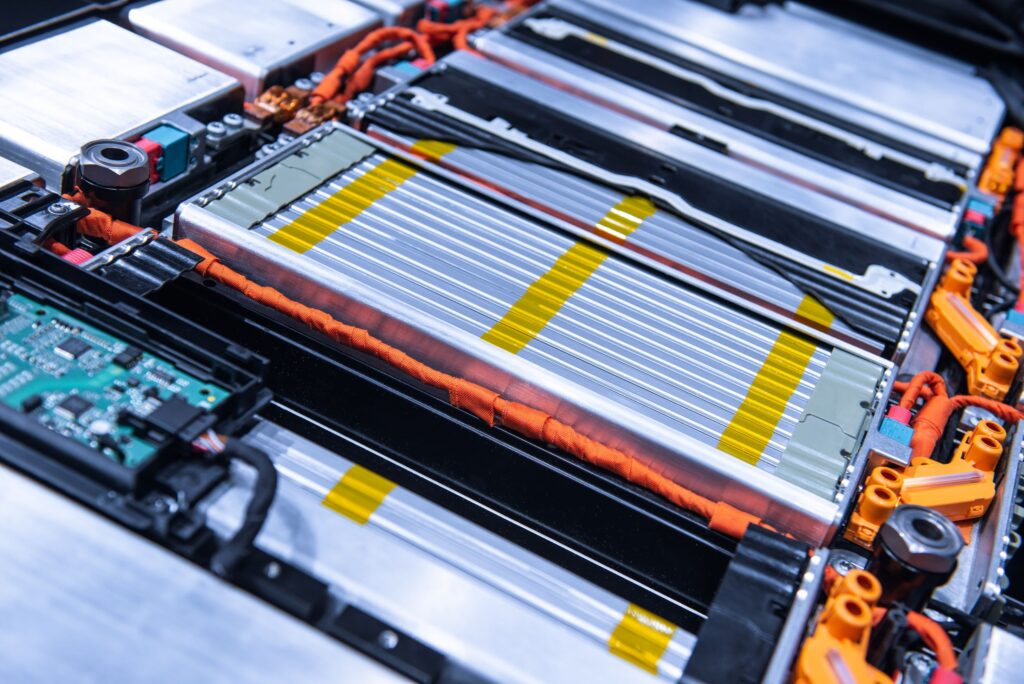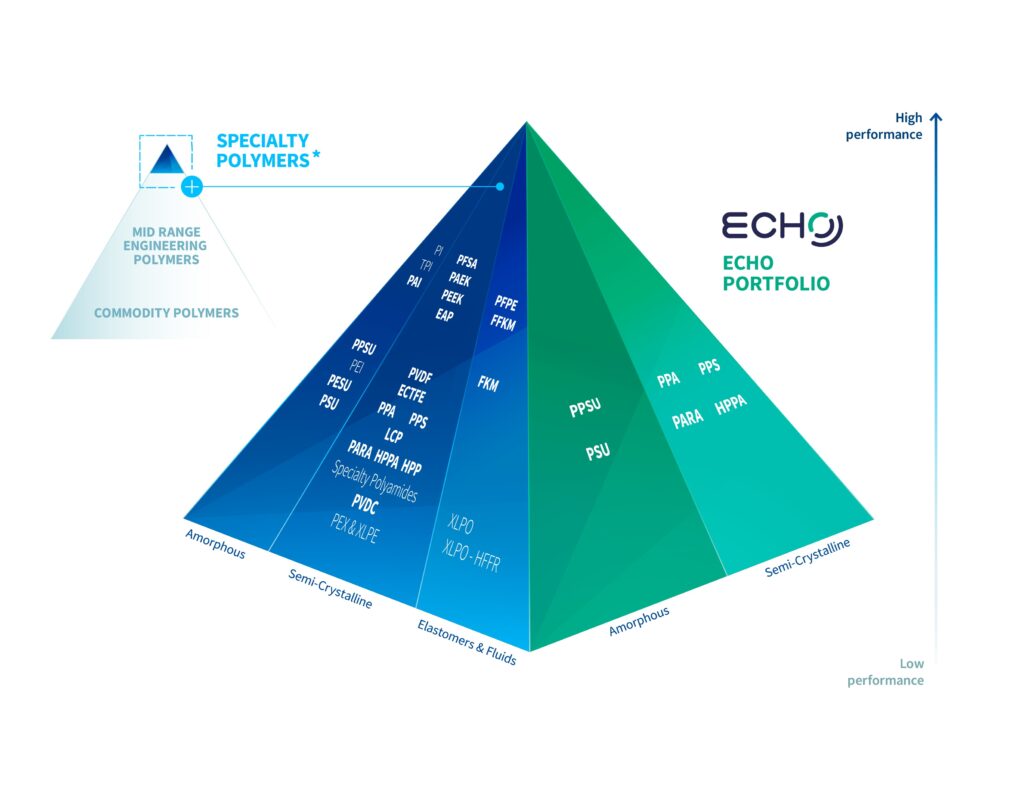
New generations of polymers are helping to make electric cars safer and go further. They are also helping OEMs to meet their circular economy targets.
Automotive Industries (AI) spoke to Nicolas Batailley, E-Mobility Marketing Manager and Ysée Genot, E-Mobility & Sustainability Marketing Manager at Syensqo.
AI: How does Syensqo’s Supreme range help drive the adoption of electric vehicles?
Batailley: Recharging is seen as an issue and may represent a roadblock for larger adoption of electric vehicles. Syensqo has devised two strategies to overcome this obstacle.
The first is to reduce charging times and the second is to provide greater efficiency.

The advent of 800-volt architecture and new electric vehicle technologies is going to create a new need in terms of materials. Ryton® Supreme HV and HF meet these requirements.
AI: What do the two new Ryton® polyphenylene sulfide (PPS) grades offer in terms of heat resistance, mechanical strength and flowability?
Batailley: As a high-voltage PPS material, Ryton® Supreme HV combines a comparative tracking index (CTI) of 600 V for best-in-class electrical performance and electric thermal index (RTI) >175°C for superior heat resistance with UL94 V0 flammability ratings.
The switch from 400 Volts to 600 Volts brings a number of challenges, particularly for chip producers. So, the main target for Ryton® Supreme HV is manufacturers of housings and chip carriers.
In both cases the life of the motorist is made easier because when you have fast charging and more efficiency, you can drive a longer distance without charging using the same amount of energy.
Ryton® Supreme HF offers high mechanical strength and excellent flowability for 0.3 mm thin-wall components. It can make a significant contribution to miniaturization and package optimization.
We are able to provide high fidelity combined with thin wall thickness of 0.3 millimeters without any compromise on the mechanical characteristics.
Target applications include bobbins for stators and insulators, where lower wall-thickness reduces the temperature of coils and facilitates reliable thermal management.
When you are able to use a very thin wall thickness bobbin in a given volume, you can put more copper, so you increase the slot ratio, and by doing that, you increase the efficiency of the car.
AI: You just introduced at Fakuma 2023 Xencor™ XTreme, a new family of long glass fiber PPA solutions for Battery Thermal Runaway Protection. What is unique about the new product range?
Batailley: Xencor™ XTreme PPA LGF grades are designed to offer superior resistance to direct flame exposure at 1,000℃ for over 10 minutes, providing sufficient time for passengers to exit the vehicle in the event of a thermal runaway and meeting the latest global regulations in Europe, China, the United States and other countries.

The materials are designed to retain an excellent level of electrical insulation after exposure to flame helping to mitigate thermal runaway in batteries. More importantly, the material has a high glass transition temperature (Tg) which enables dimensional stability of the parts under battery operating conditions.
Xencor™ XTreme is designed for battery components such as overmolded busbars, module end plates and fixtures and extends our broad portfolio of battery solutions. This product range gives engineers the freedom to address some of their biggest challenges in terms of safety, power density, security and lightweighting.
AI: How do you integrate sustainability into your High-Performance Portfolio?
Genot: Material suppliers are being extremely challenged by sustainability. When you move to electric cars the focus turns from tailpipe emissions to the carbon footprint of the whole lifecycle of the car.
Our long-term goal is to reach carbon neutrality on specialty polymers by 2040. Over the short term we are reducing the carbon footprint of each of our products, as well as the quantities of finite resources we use.
We have launched the Echo range engineered with bio-based and recycled content.
We are also reducing the carbon footprint of our manufacturing operations. Our new grades of Ryton® polyphenylene sulfide (PPS) Supreme resins are produced with 100% renewable electricity.
We are starting to use recycled glass fiber in some of our products.
The challenge is to retain the mechanical performance while reducing the carbon footprint. We will not compromise on performance.
AI: Please tell us more about the ECHO range.
Genot: The ECHO portfolio incorporates all our new grades which are bio-based or contain recycled materials under one umbrella. The range will grow as we develop new ways of using bio-based and recycled feedstock.
ECHO bio-based resins utilize feedstock from non-edible and non-food competing crop production.
Our Udel® PSU ECHO RP and Radel® PPSU ECHO RP are the first ISCC-PLUS mass balance compliant sulfone materials in the market and commercially available worldwide.

Other mass-balance certified bio-circular polymers include grades of Ryton® PPS ECHO RP.
ECHO recycled solutions utilize post-industrial and post-consumer recycled monomers, polymers, and/or fillers to formulate high-quality products, reducing environmental impact without sacrificing performance.
AI: What is next for Syensqo?
Genot: There is still a lot we can do to continue to lower the carbon footprint of our products. By 2024 all our compounding sites will be running on renewable electricity.
Then there are always new requirements from the auto industry. New technologies like electric motors and hydrogen fuel cells need new solutions, which have to incorporate sustainability.
Our driver at Syensqo is to adapt and offer solutions for customers, to address new challenges to help them to solve their new issues.
We are also moving away from being pure material suppliers. There is a new end of life role, where we can help OEMs to recycle our materials to be part of the circular economy.
While our high-performance polymers don’t represent a large percentage of the end-of-life waste, there are still some interesting projects that we can do. We are looking for partners and for projects where we can help reduce this waste.













More Stories
Some Ways How Motorists End Up in Collisions at U-Turns
Maximise Margins with Proven PPF Tactics
Finding the Car Boot Release Button – Tips and Tricks